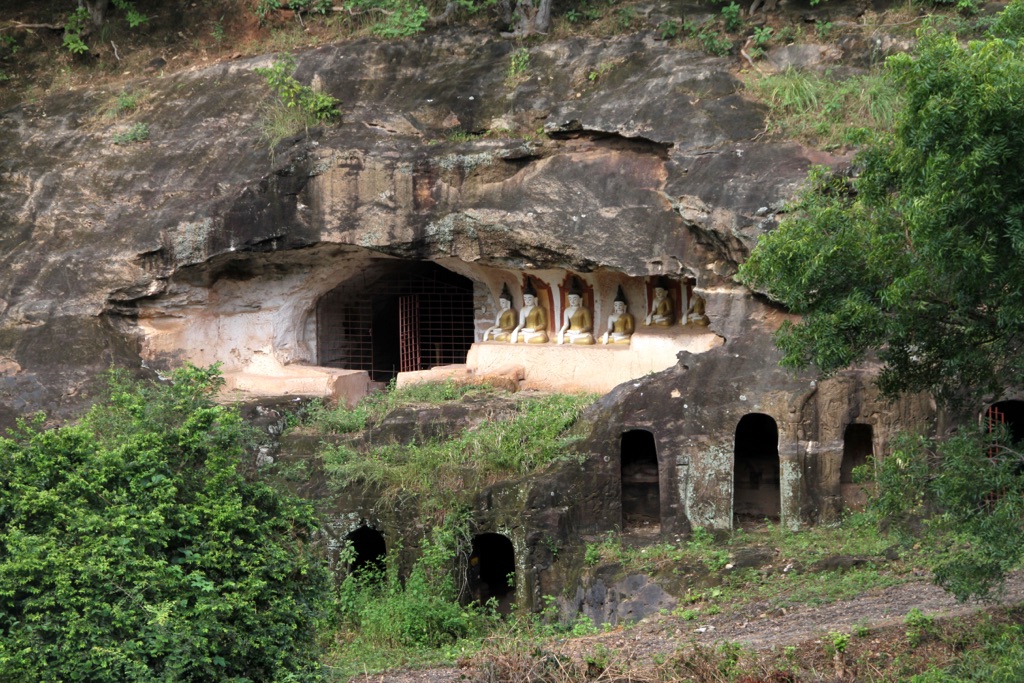Phowintaung is a Buddhist cave complex located in the Sagaing Region of Myanmar. Known for its hundreds of caves, the site is a treasure trove of Buddhist art and murals. The name Phowintaung translates to “Mountain of Isolated Solitary Meditation,” reflecting its historical use as a place of worship and retreat. The caves are adorned with paintings and carvings that date back to the 14th century. This site provides a unique glimpse into the religious and cultural history of the region.
Get your dose of History via Email
Historical Background of Phowintaung
Phowintaung’s discovery by the Western world is not well-documented. However, local knowledge and oral traditions have long recognized its significance. The caves were created over centuries, with contributions from various patrons. The earliest caves date back to the 14th century. They were carved into the sandstone hills by Buddhist monks. Over time, the complex expanded with the support of local rulers and communities.
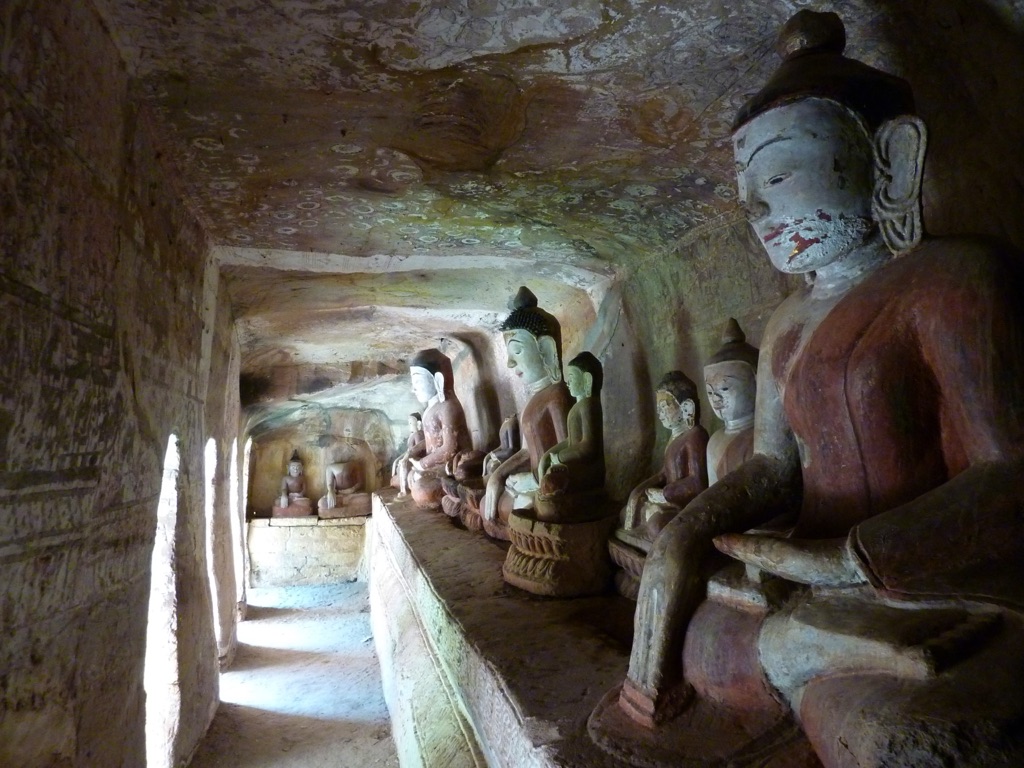
The site’s builders were the people of the Pagan Kingdom, an ancient empire in Myanmar. They created Phowintaung as a religious site. It served as a place for meditation, worship, and the study of Buddhist scriptures. The caves became a center for Buddhist learning and art. They attracted monks and pilgrims from across the region.
Throughout its history, Phowintaung has seen continuous use and expansion. Various kings and patrons added new caves and artwork. The site has also been a witness to historical events. It stood through the rise and fall of kingdoms in Myanmar. Yet, it remained a place of spiritual importance.
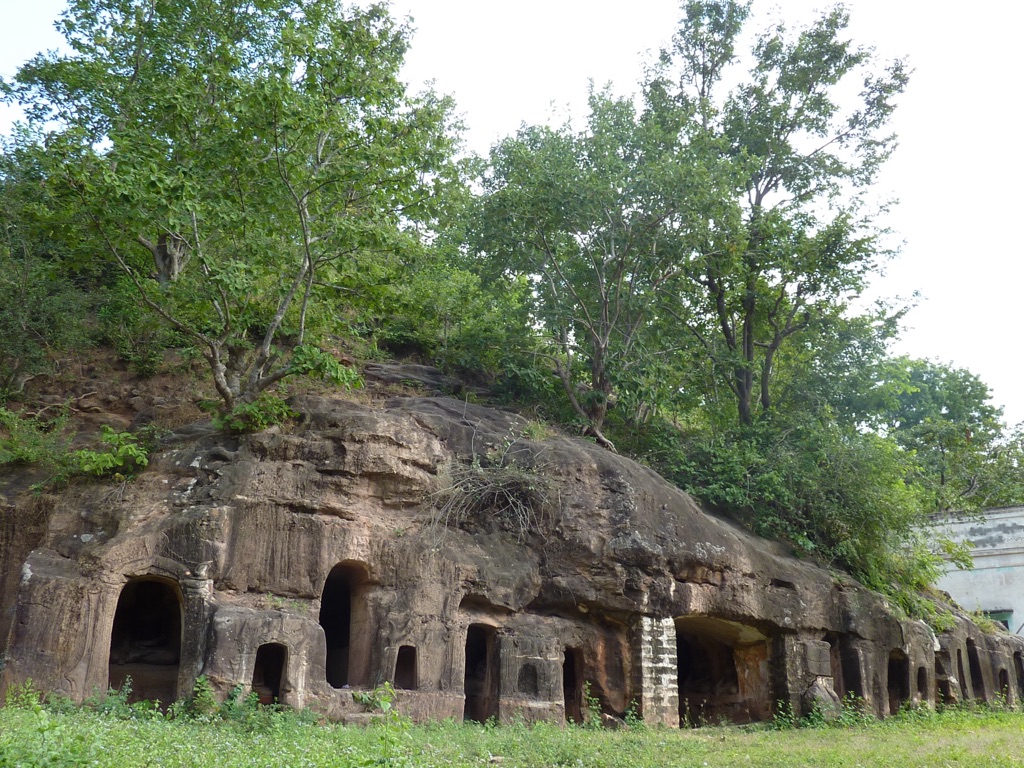
The site has been preserved through local efforts and the reverence of the Buddhist community. Today, Phowintaung remains an active religious site. It continues to attract both worshippers and tourists. Its historical importance is recognized by scholars and visitors alike.
About Phowintaung
Phowintaung is renowned for its extensive network of caves. These caves are carved into a limestone hill. They house a remarkable collection of Buddhist statues and murals. The artwork within the caves is a testament to the skill and devotion of its creators. The murals depict various Jataka tales, which are stories about the previous lives of the Buddha.
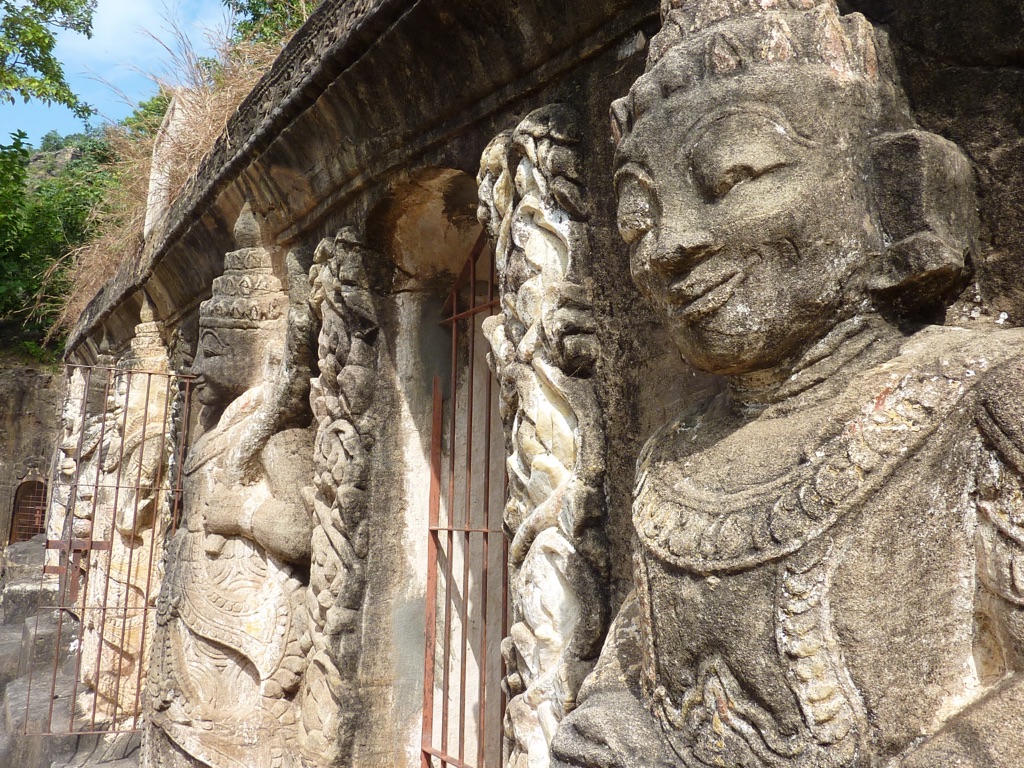
The construction methods of Phowintaung involved carving into the natural rock face. The builders used simple tools to create the caves and intricate designs. The materials used for the murals were natural pigments. These pigments have withstood the test of time, retaining their vivid colors.
Architectural highlights of Phowintaung include the unique facade designs of some caves. They feature elaborate entrances with carved pediments. Inside, the caves vary in size and complexity. Some are simple chambers, while others are elaborate with columns and vaulted ceilings.
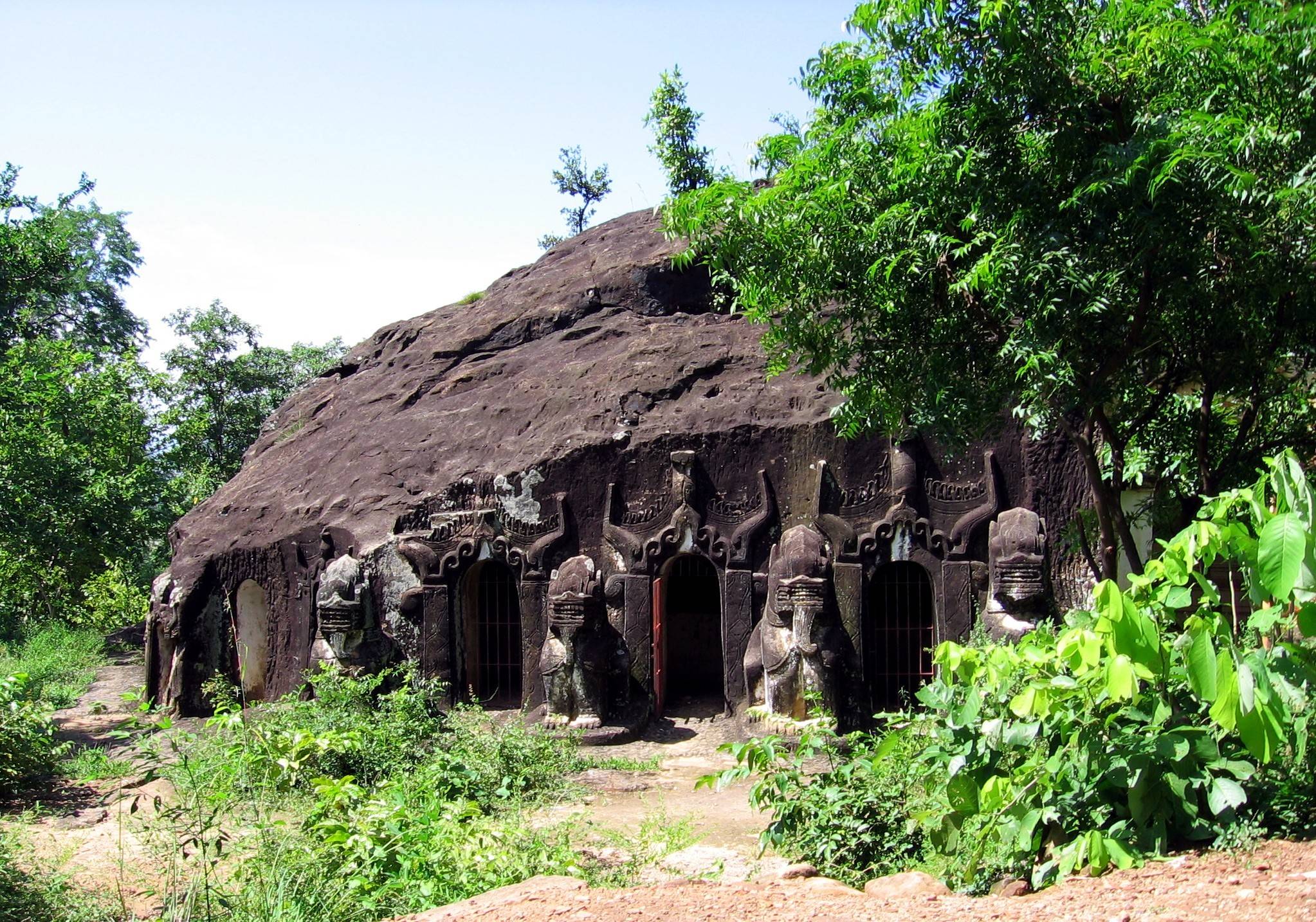
The preservation of the site’s artwork is remarkable. The dry climate has helped to maintain the murals and statues. However, conservation efforts are necessary to protect them from modern threats. These threats include pollution and human interference.
Phowintaung stands out for its combination of natural beauty and man-made art. The complex offers a serene atmosphere. It is surrounded by lush vegetation and overlooks the Chindwin River. This setting enhances the spiritual experience for visitors and worshippers.
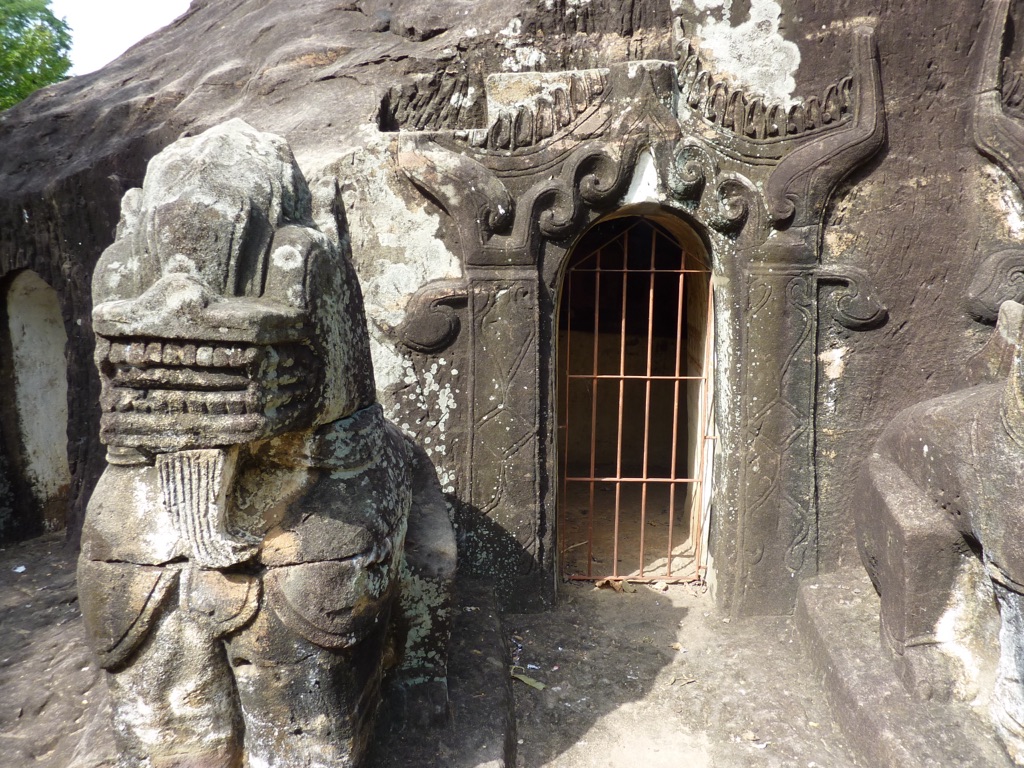
Theories and Interpretations
The use of Phowintaung has been a subject of interest for historians and archaeologists. The consensus is that it served as a monastic complex. It was a place for meditation and religious instruction. The presence of monastic cells supports this theory.
Interpretations of the murals and carvings often require a deep understanding of Buddhist lore. The Jataka tales depicted are not always straightforward. They require contextual knowledge to be fully appreciated.
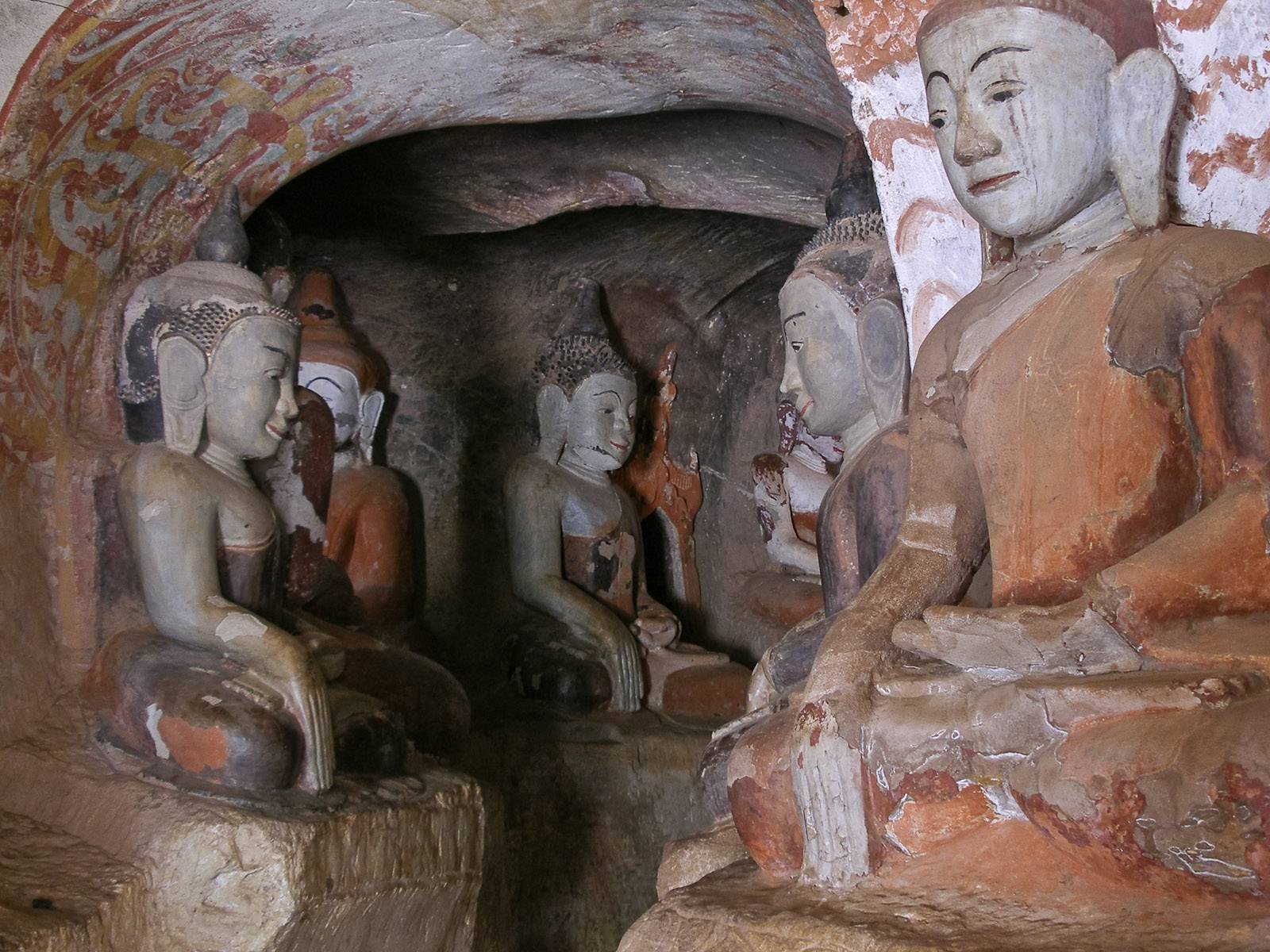
Dating of the site has been carried out through stylistic analysis of the art. Carbon dating of organic materials has also been used. These methods have helped to establish a timeline for the creation and use of the caves.
Theories about Phowintaung continue to evolve as new discoveries are made. Each new piece of evidence adds to the understanding of this complex site. It also contributes to the broader knowledge of Myanmar’s history and culture.
At a glance
Country: Myanmar
Civilization: Pagan Kingdom
Age: 14th century AD
Conclusion and Sources
Reputable sources used in the creation of this article include:
- Wikipedia: https://en.wikipedia.org/wiki/Phowintaung

